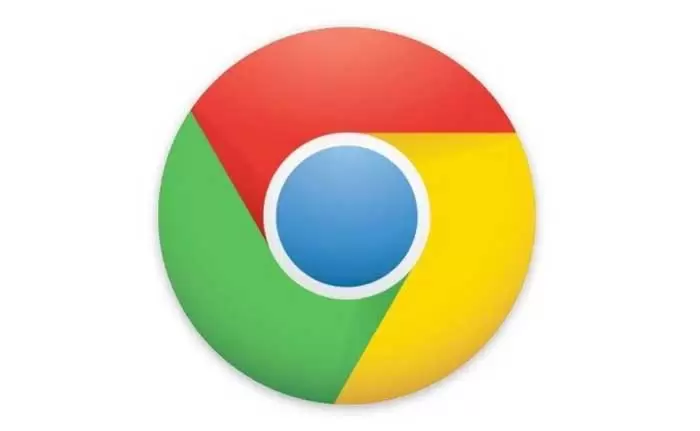How to speed up Chrome (Windows and Android)
Google Chrome is the most popular browser used today and is available in various operating systems. Many people prefer it because of its speed and minimalist design. Although this browser usually does not have any problems, in some cases, there may be certain problems that we will address in this article.
A practical tip before you start
Note that Chrome is the best browser possible for Windows, Android, and iPhone in terms of speed, security, and performance. This is because Google designed it, which knows the Internet almost like the back of your hand, to detect fraudulent sites that may steal your bank card information when making an online deposit or infect your system and prevent you from accessing them ( Unlike Firefox and Safari and…)
The main reason for Chrome’s slowness is installing the plugin or opening many tabs, but the following methods will definitely solve your problem.
How to solve the problem of Google Chrome slowness and speed up (Windows and Android)
Before performing any of the recommended troubleshooting steps below, it is best to restart your computer first. This refreshes the operating system and removes corrupt information that could cause problems.
Solve Google Chrome problem in Windows
Several factors can slow down the performance of Google Chrome in Windows. There may be a lot of tabs open while you have limited RAM. You should note that each Chrome tab consumes a significant amount of RAM, and if your computer has only 4 GB of RAM, you will probably have problems if different tabs are open. Another possible factor that can cause this problem is the poor internet. The browser loading time depends on your internet speed so make sure the internet is not a problem.
Below are some common troubleshooting steps you can take to resolve this issue.
Disable browser extensions
If your Chrome browser has several plugins installed and running, this can greatly affect its speed. If you have plugins installed, you should try disabling them.
1. Open the Google Chrome browser.
2. Click on the Customize and control icon in the upper right corner of the browser window.
3. In the drop-down menu that appears, select More tools and then Extensions.
4. In the Extensions tab, find the plugin you want to disable or delete.
5. To disable the plugin, click on the plugins box to make it gray. Click the Remove button to delete.
Finally, check if Google Chrome is still running slowly on Windows.
Turn off hardware acceleration
hardware acceleration is a feature that allows a computer to transfer specific tasks typically performed by the CPU to the GPU. This feature improves system performance, although it can sometimes cause problems. To check if this feature is causing the problem, you must turn it off.
1. Open the Chrome browser.
2. Click on Customize and Control (three-dot symbol) at the top left and then select Settings.
3. Scroll down and click Show Advanced Settings.
4. Go to System and select Hardware Acceleration.
5. Turn it off.
Now check if the problem of Google Chrome slowness in Windows still exists.
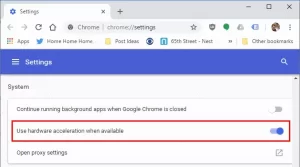
Rename the default folder
The default folder is where the browser stores your profile. If the information in this folder is corrupted, it could lead to this problem. To resolve this issue, you must automatically rename this folder to create a new folder.
1. Open Windows Explorer.
2. Copy this phrase (LOCALAPPDATA% \ Google \ Chrome \ User Data%) into its address field (as shown below) and press Enter.

3. Search for a folder named Default and rename it to Backup Default.
Check to see if Google Chrome is still running slowly on Windows.
Reset your computer network adapter
The problem could be due to a fault in the network adapter. In this case, you must reset the computer network adapter.
1. Press the Windows + X keys and open the Command Prompt by right-clicking and selecting Run as Administrator.
2. Now type the phrase netsh Winsock reset.
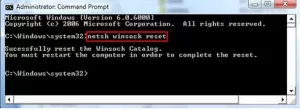
3. Restart the computer.
Check to see if Google Chrome is still running slowly on Windows.
Reinstall Google Chrome
If the above steps do not resolve the issue, you will need to uninstall Chrome from your computer and reinstall it.
1- Close all windows and chrome tabs.
2. Then click on the start menu.
3- Click on apps.
4. In the Apps & Features section, find Google Chrome and click on it.
5. Click on uninstall.
6- Also, mark delete your browsing data.
7. Click on uninstall.
After uninstalling, restart your computer and then reinstall Chrome.
1- Download the Chrome installation file from the official website.
2. Click on the run or save.
3- If you select save, double-click on the icon to start the installation.
Now check if the problem of Google Chrome slowness in Windows still exists.
Solve Google Chrome problem in Android
Two main factors in examining browser performance are your hardware and your internet speed. It does not matter if you have the fastest smartphone in the world. The speed of your browser depends on the speed of your internet. But what if you could make your smartphone useless volume?
This is exactly what the Chrome for Android Lite Mode feature does. Basically, turning on this option sends data to Google servers to be compressed and optimized. In addition to speeding up your browser, this will also help reduce internet usage.
How to turn on Lite Mode
1. Open Chrome.
2. Press the 3-point menu button in the upper right corner of the screen.
3. Select Settings.
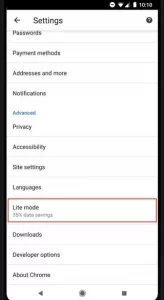
4. Scroll down and select Lite Mode.
5. Turn it on.
Clear cache or cache
The cache is actually a good thing—it loads browsing data and stores it in your local storage. But the problem occurs when you save a lot of caches because files can become fragmented and corrupted, slowing down your browser. It is best to clear your browser memory from time to time.
How to clear the Android Chrome cache
- Open the phone settings
- Now enter the apps section
- Find Google Chrome
- Click Clear cache
Preload pages for faster browsing
Sometimes Google can be very good at predicting what you do. This algorithmic magic can also help Chrome speed up for Android. The mobile browser can preload websites before they can be accessed. This means that the sites are loaded before you decide to enter them. Although this increases the speed, it has one downside. The main problem is that doing so may waste a lot of volumes. If you have limited internet, this method is not recommended for you, but if you do not have a problem wasting your volume, you will probably enjoy it faster.
How to enable page preload:
1. Open Chrome.
2. Press the 3-point menu button in the upper right corner of the screen.
3. Select Settings.
4. Tap Privacy and security.
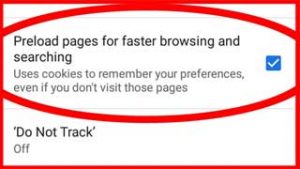
5. Search for Preload pages for faster browsing and searching and turn it on.
Use Chrome shortcuts on your home screen.
One way to speed up your browser is to use home screen shortcuts for high-traffic websites. You can put your most visited sites on your home page. You no longer need to go to the browser and find the site manually.
How to create a shortcut to a website in Chrome:
1. Open Chrome.
2. Go to the site where you want to create a shortcut.
3- Press the 3-point menu button in the upper right corner of the screen.
4. Select Add to Home screen.
5. Edit the title to your liking.
6. Select Add.
Keep Chrome up to date.
Keep in mind that Chrome is constantly updated, and its team is always trying to make things more efficient, enhance features, and eliminate bugs. Make sure your Chrome browser is upgraded to the latest version. This will increase the chances of running smoothly and quickly. You have to go to the Google Play Store, search for Chrome, and make sure it’s up to date.
Speed up by closing the unused Chrome tabs
Close all the tabs you need so that the browser can run smoothly and quickly.
1. Open Chrome.
2- Tap the square icon in the upper right corner of the screen (next to the 3-dot menu button).
3- Press the X button in the corner of the desired tab (which you want to close).










